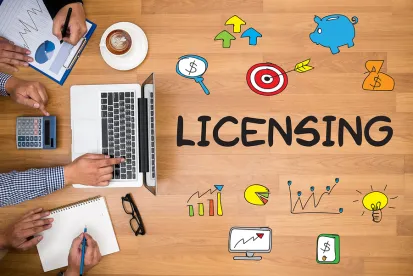Patent-centric transactions can take several forms ranging from acquisition of a patent portfolio, licensing deals, joint development deals, M&A, or joint venture. While each transaction is likely to have its own nuances, certain key aspects are relevant for any form of patent acquisition/license. In this article, we discuss these key aspects.
-
Due Diligence Considerations
-
Title to the invention
To ascertain whether transferor has a clear title to the patents, the following are key considerations:-
Name of the patentee/applicant
The patent/patent application being acquired/licensed must be registered/applied for in the name of the transferor.
Experience suggests that at times, the founders of the transferor entity are named as the patentee and not the entity itself. In such a case, a condition precedent to the transfer of the patent would be to have such patent assigned to the transferor entity. Direct acquisition from the founder(s) may not be advisable as she may not have resources to provide indemnity to the acquirer.
Similarly, in case of group companies, all intellectual property belonging to all group entities may be owned by one of the group entities for tax/structuring reasons. This entity then licenses the intellectual property to its group entities. The acquirer should ascertain that the transferor actually owns the intellectual property and has a right to grant the rights being acquired. -
Inventor of the invention
Typically, employees/third-party contractors of an entity are involved in the development of an invention. Acquirer must ensure that the transferor has clear documentation to ensure that all rights in intellectual property developed by employees/third party contractors vest with the transferor. Unlike several other jurisdictions, in India “work for hire” is not recognized as a concept except in relation to works protected under the Copyright Act 1957 created by an employee during the course of her employment for the employer. Patent rights need to be specifically assigned and there is no automatic vesting of rights with the employer. Such assignment from the employees/third-party contractors should be in place prior to the transfer to acquirer. Further, it should be ensured that all the inventors have been named in the application as any lapse may lead to potential litigation.
-
-
Jointly owned patents
In case of co-owned patents, rights in the patents can be transferred only with the consent of all owners. Consent from all co-owners is also required for transfer of a co-owner’s share in the patent. Such consent can be recorded in two ways:-
in cases where the transaction is intended to be confidential, the transferor can enter into an agreement with the co-owner(s) whereby the co-owner(s) can provide consent to assignment of the transferor’s share in the patent to any third party;
-
the transferor, co-owner(s) and the acquirer can enter into a tripartite assignment agreement between where co-owner consents to the assignment.
-
-
Security interest over patent rights
Typically, if a patent is hypothecated as a security for a loan, the loan documentation is likely to contain the following restrictions:-
a complete prohibition on further assignment or licensing of the patent or a restriction on creation of such rights without the consent of the lender;
-
a disclosure requirement requiring the borrower (patentee) to disclose all details of any rights created in relation to the patents hypothecated. A broad disclosure requirement could lead to disclosure of all commercials of a licensing arrangement to the lender.
-
-
Ideally, in case of an acquisition, any charge upon the patents being acquired must be extinguished prior to the acquisition so that the acquirer obtains a clear title free from all encumbrances to the patent(s). In case of licensing, it must be ascertained if any such clauses are present in the loan documentation.
-
Validity of patents
The status of registration of the patents and the term of the proprietary rights in such patents are key considerations.
-
Timely renewals
In case of granted patents, the patent(s) must be valid and the registration must be maintained by timely payment of renewal fees. Under the Patents Act, 1970 (“Patents Act”), non-payment of renewal fees can result in a lapse of a patent. In case of pending patent applications, acquirer must ensure that all filings have been made in the timely manner.
-
Working Statements
It is mandatory under the Patents Act for every patentee and every licensee to file a statement (Form 27) as to the extent of commercial working of a granted patent in India. Non-compliance with the requirement of filing the working statement within the prescribed timelines may invite penalty of imprisonment which may extend to six months, or with fine, or with both, as provided under. A patent which is not worked is at risk of compulsory licensing as one of the factors to be established for grant of a compulsory license is that the patent is not worked in India.
-
Foreign Filing License
Section 39 of the Patents Act states that no person resident in India shall “cause to be made” an application for a patent outside India unless a similar application has already been made in India, or a foreign filing license has been granted. Any granted patent filed in contravention of Section 39 is liable to be revoked. Further, the Patents Act prescribes imprisonment of up to two years in case of violation of Section 39. Acquirer must therefore ensure that prior to filings being made in India, no patent applications have been filed outside of India without a foreign filing license.
-
Pending litigations
In case there are pending disputes in relation to the patents being transferred, acquirer can consider seeking a settlement/disposal of such matters as a condition precedent to the transfer. This would protect the acquirer from incurring further expenses in conducting the litigation and having to wait for such matters to be resolved.
Apart from the above, there is no presumption of validity of a patent in India and patents are susceptible to validity challenges any time after grant of the patent. Therefore, an acquirer should consider evaluating the strength of the patent prior to the acquisition. Prosecution history of the patent may provide assistance in this regard.
-
DOCUMENTATION
It is also important to ensure that the rights transfer documentation contains a proper transfer of rights clause and sufficient clauses to safeguard the interests of the acquirer, such as:
-
Robust clauses for assignment of the patent
An assignment agreement must: (a) be in writing; (b) be duly executed, and (c) contain all terms and conditions of the transfer. The assignment agreement should also clearly identify the invention by specifying the number of the application for the patent or the number of the granted patent.
It is recommended to insert language empowering the assignee to act as the assignor’s power of attorney for the purposes of executing documents/making required filings in patent offices worldwide to perfect the ownership rights transferred.
-
Essential Representations and warranties
Each patent assignment/licensing agreement must contain the following essential representations and warranties:
-
The patents/patent rights being transferred are valid and subsisting;
-
The inventors named are true and first inventors.
-
There are no pending/threatened disputes in relation to the patents;
-
The patents do not infringe any third party’s intellectual property rights;
-
Post-acquisition measures
Either the acquirer or the transferor may file an application before the Controller of Patents for the registration of assignment of the patents.
Section 69(5) of the Patents Act provides that any agreement providing such title/interest to a person will not be admitted by the Controller or by any court as evidence of the title/interest unless the Controller or the court directs otherwise in writing. In the case of SERGI Transformer Explosion Prevention Technologies Private Limited vs. CTR Manufacturing Industries Limited, the Delhi High Court held that the assignment of a patent would be valid the moment the assignment agreement is executed. Validity of the assignment is not dependent on its registration. In relation to Section 69(5), the court stated that if an assignment agreement that has not been registered with the patent office is produced as evidence of title before the controller/court, the court is empowered to accept it as evidence by providing reasons in writing for acceptance.
Conclusion
To avoid an improper title transfer, the above factors are essential checks for any patent-related transaction. An acquirer with an imperfect title is prone to third-party claims over the patents at issue.
1 For a detailed discussion on key considerations in IP centric deals, please visit
2 Section 50(3) of the Patents Act.
3 Section 50 (3) of the Patents Act
4 Section 146(2) of the Act read with Rule 131(2) of the Patent Rules, 2003
5 Section 122(1) (b) of the Patents Act
6 Section 84 of the Patents Act.
7 Section 40 of the Patents Act
8 Section 118 of the Patents Act
9 A patent is open to a challenge any time after its grant by way of post-grant opposition under Section 25 of the Patents Act within one year of grant of the patent and any revocation proceeding under Section 64 of the Patents Act. A patent is open to a challenge any time after its grant by way of post-grant opposition under Section 25 of the Patents Act within one year of grant of the patent and any revocation proceeding under Section 64 of the Patents Act
10 Section 68 of the Patents Act
11 Manual of Patent Office Practice and Procedure, available at (last accessed on July 19, 2021)
12 Section 69 of the Patents Act
13 2015 (64) PTC 357 (Del)




 />i
/>i
